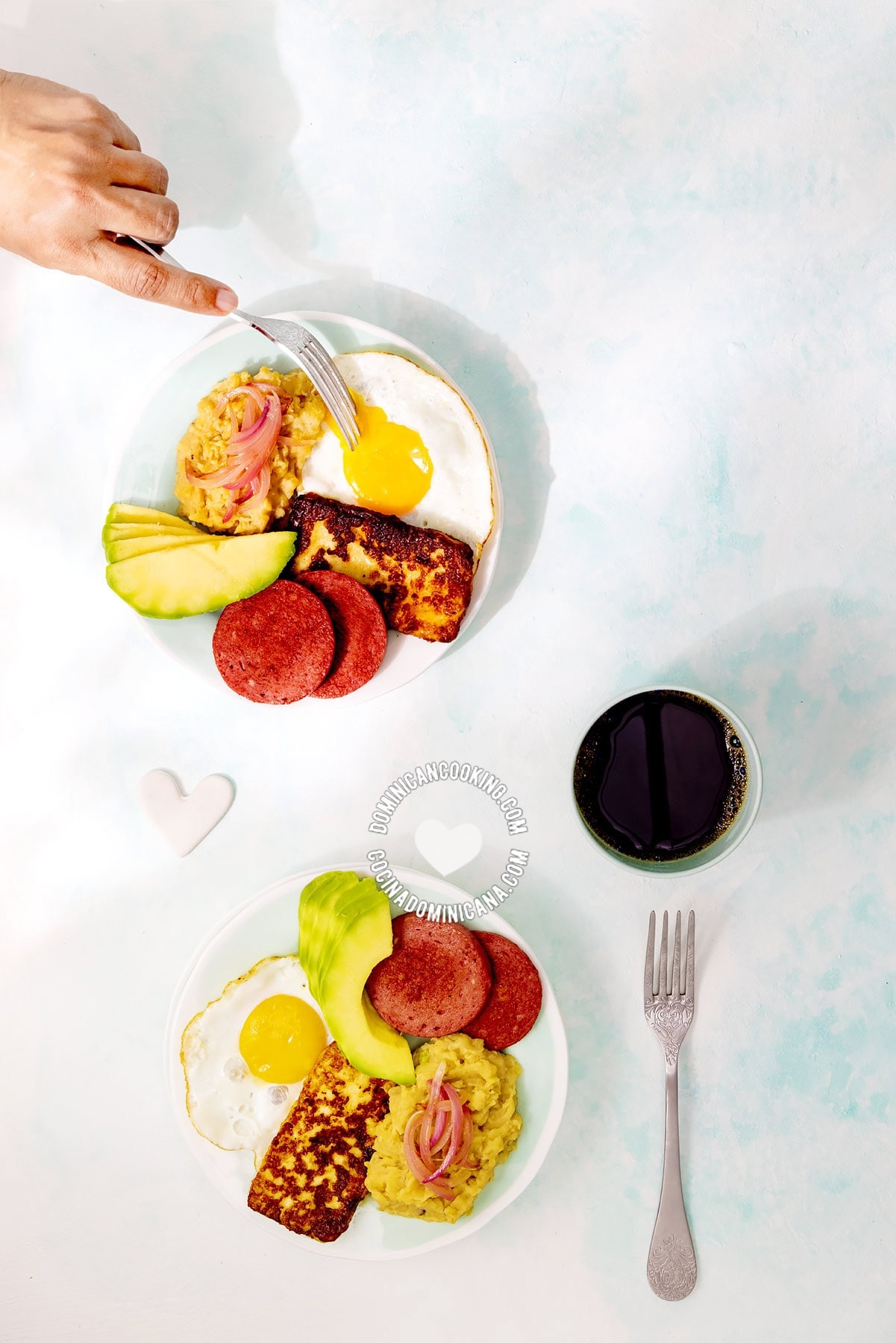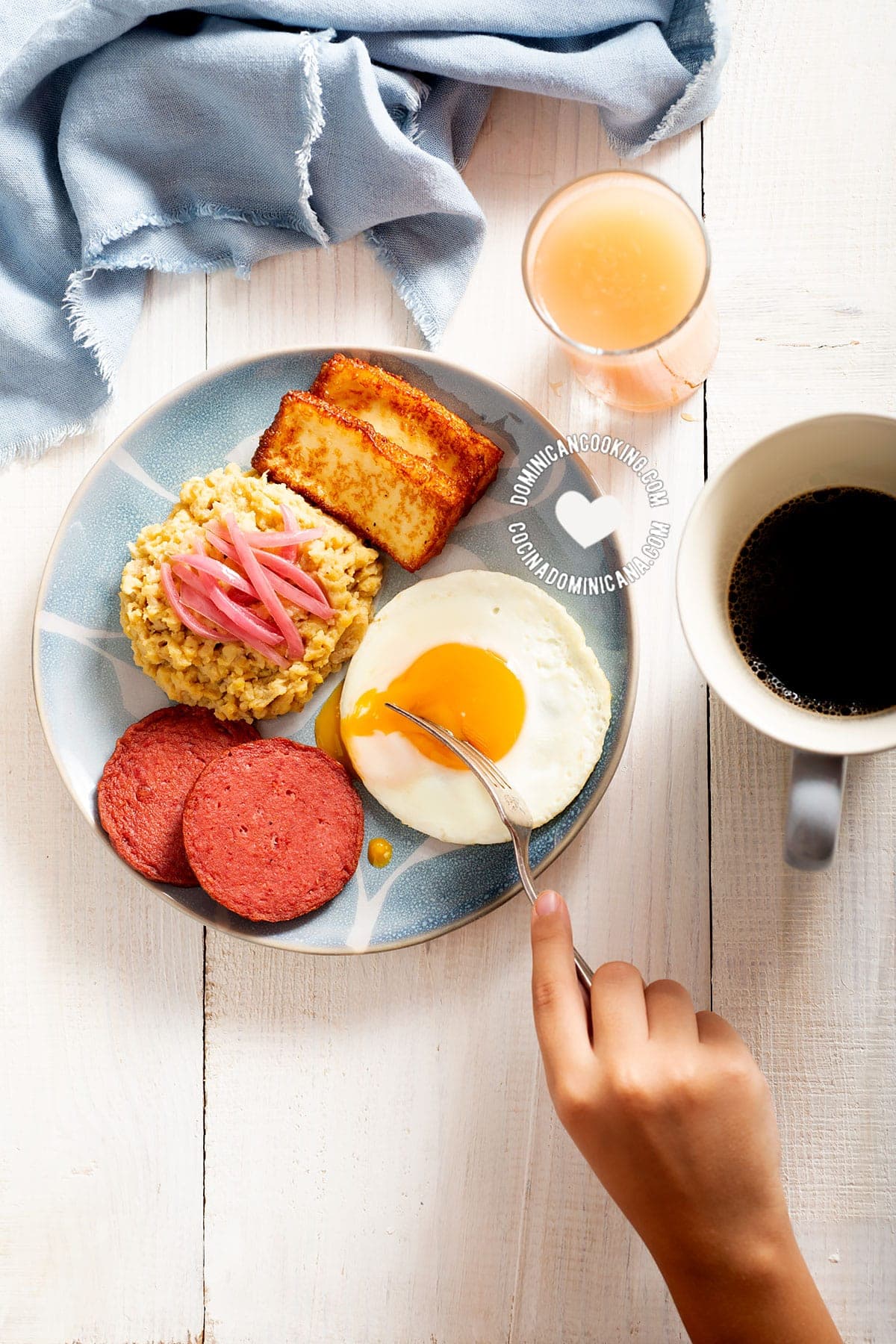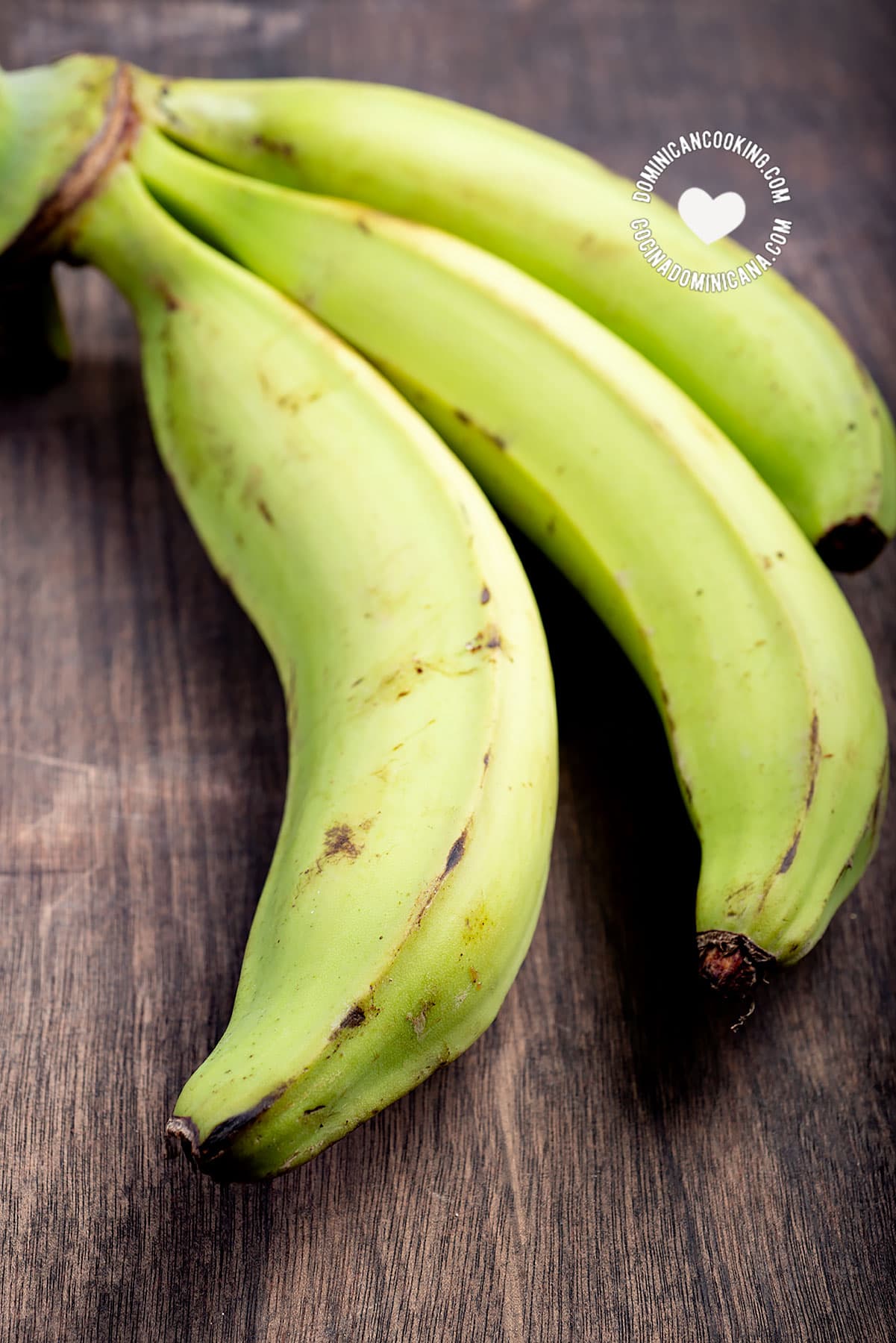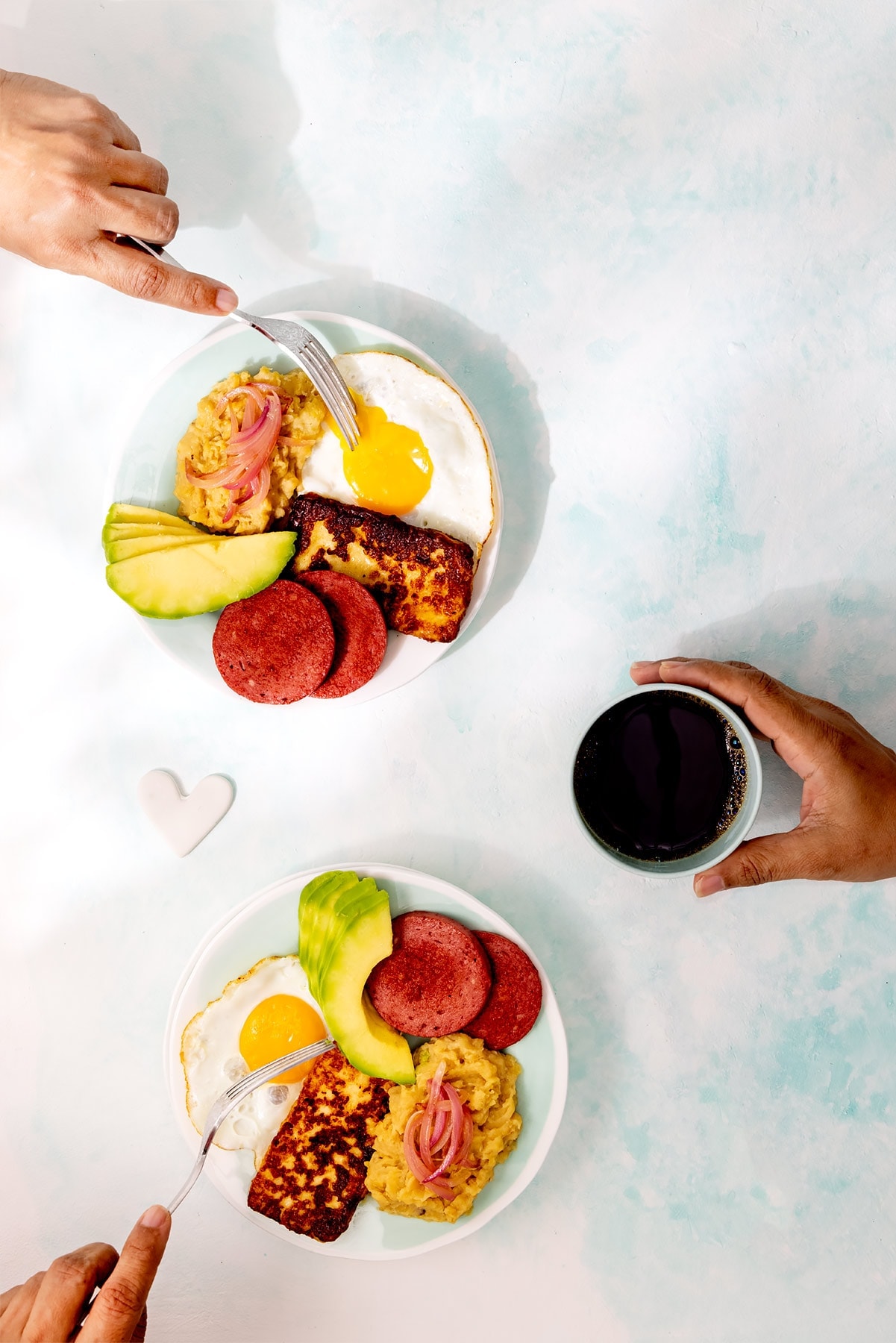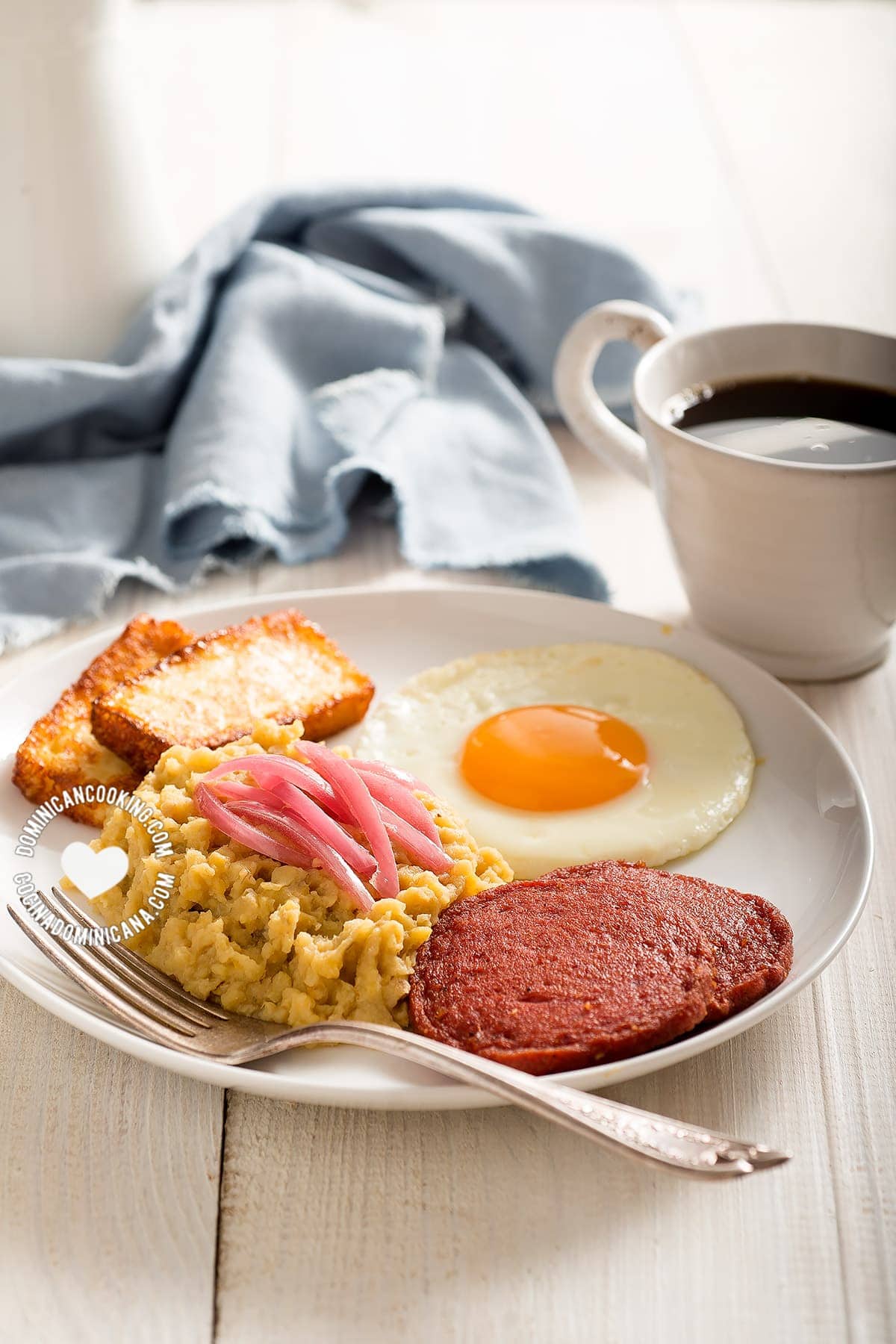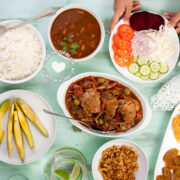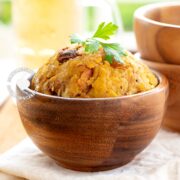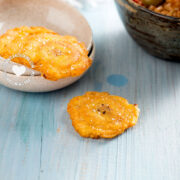Mangú, or Dominican mashed plantains, is one of Dominicans' most beloved dishes, the base of "Los Tres Golpes", the most complete and complex breakfast of our gastronomy. And if you are wondering how to make mangú that delights every Dominican, here are my secrets.
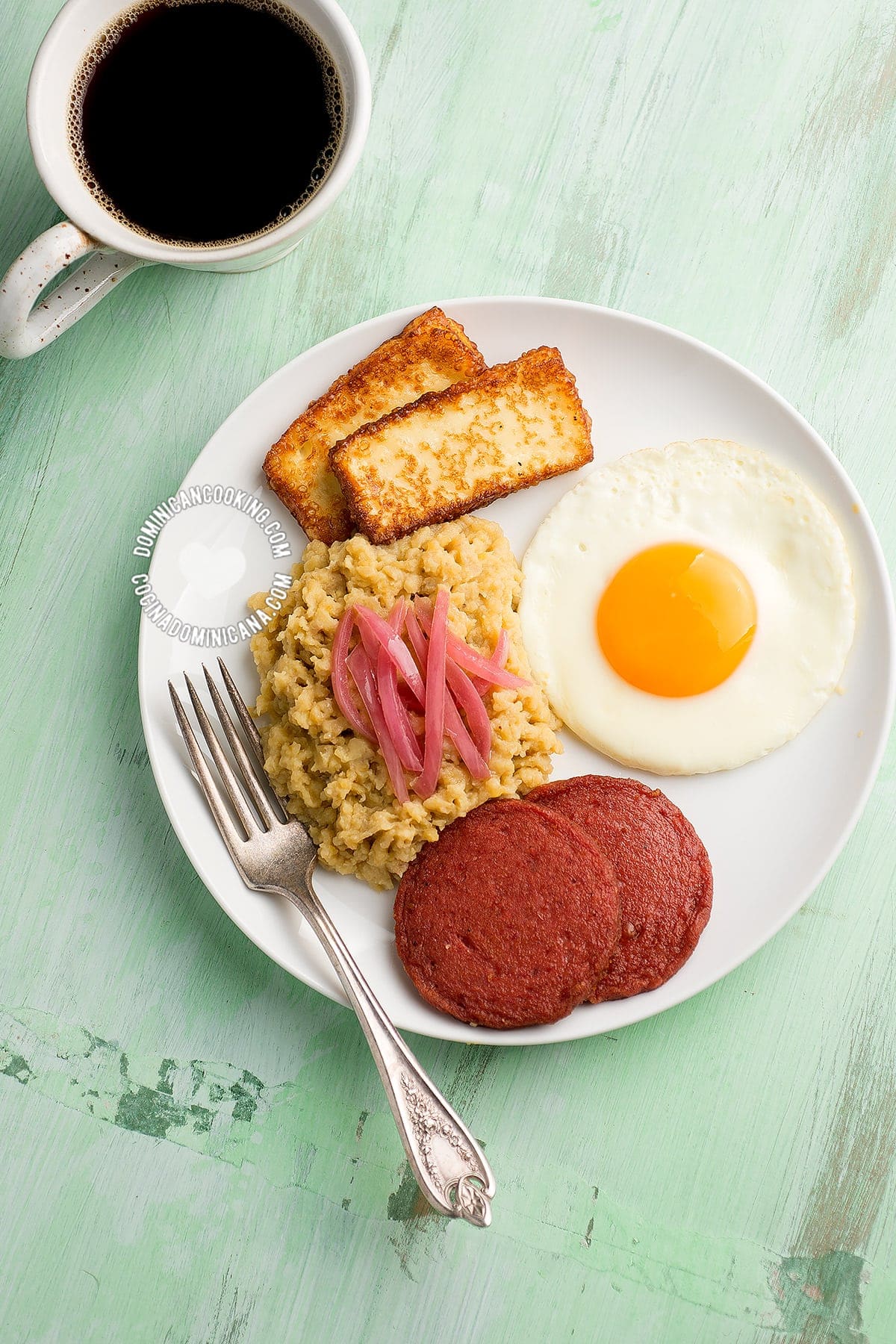
Why we ❤️ it
Mangú, is the favorite plantain-based dish in the Dominican Republic, and an iconic Dominican breakfast dish. A creamy, smooth plantain mash, Dominican mangú is a great dish to start our days, and an unforgettable treat if you try it for the first time.
Our mangú recipe produces the creamiest, smoothest recipe, and our classic serving suggestions. Read more about the name and history of this beloved dish.
What is Mangú?
Mangú is the Dominican-style mashed plantain dish, and it is one of the best-known and most representative foods in Dominican cookery. Served with "Los Tres Golpes", it could probably be called Dominicans' Official Breakfast Dish.
Alongside tostones and mofongo, mangú is the most popular plantain dish in the Dominican Republic.
Nutrition in plantains
According to our research, plantains are nutritionally beneficial, they have more than twenty times the amount of vitamin A, about three times the vitamin C, double the magnesium, and almost twice the potassium as a banana. Very low in fat and sodium, they are cholesterol-free and offer a good source of fiber. One-half cup of cooked slices contains about 89 calories.
Sounds great, doesn't it?
How it's served
Plantains for breakfast are usually eaten as mangú, which is made by boiling the plantains and mashing them with some water, salt, and oils or butter.
Mangú is traditionally topped with flavorful Dominican onions in vinegar and served with fried eggs, fried cheese, and fried Dominican salami. The dish is then referred to as Mangú with Los Tres Golpes (the three strikes).
Recipe
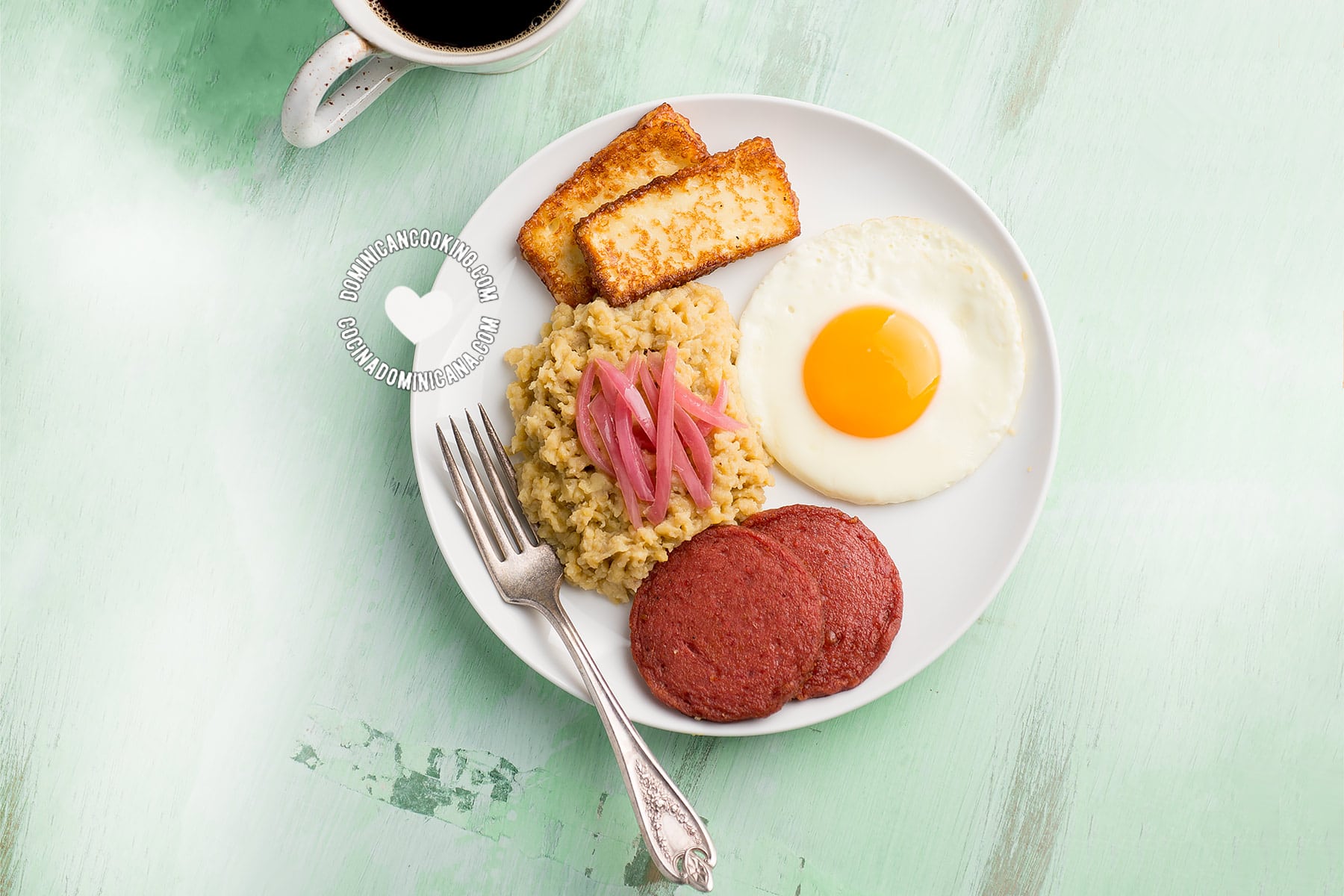
[Recipe + Video] Mangú (Dominican Mashed Plantains)
Ingredients
To make mangu
- 2 plantain (green, unripe)
- 1½ teaspoons salt
- 4 tablespoons butter, or olive oil, whichever you prever
Instructions
Mangú
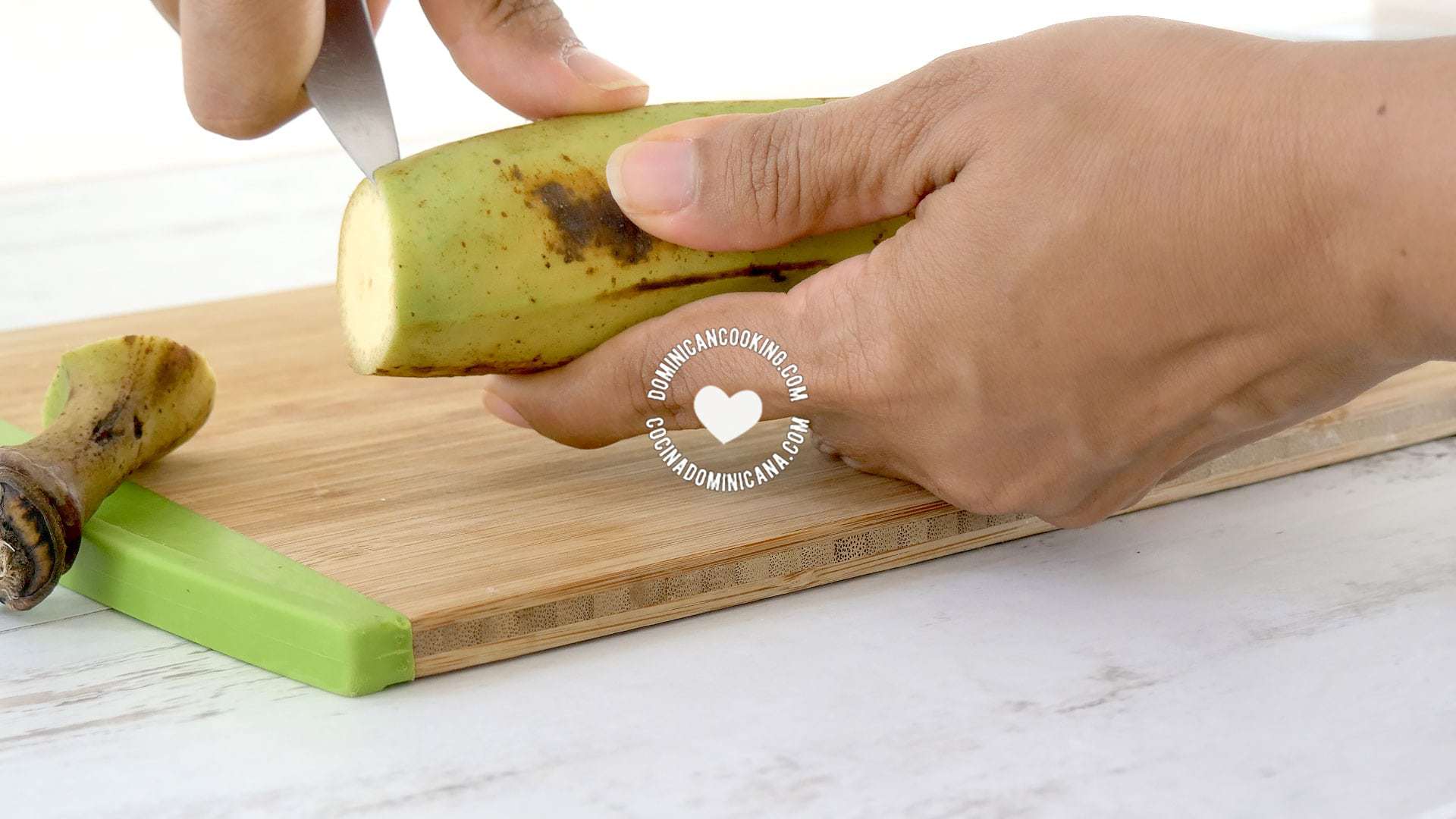 Peel the plantains (see how-to) and cut lengthwise, then divide each half into two. You can remove the center where the seeds are located (optional, this is just my preference for a smoother mangú).
Peel the plantains (see how-to) and cut lengthwise, then divide each half into two. You can remove the center where the seeds are located (optional, this is just my preference for a smoother mangú).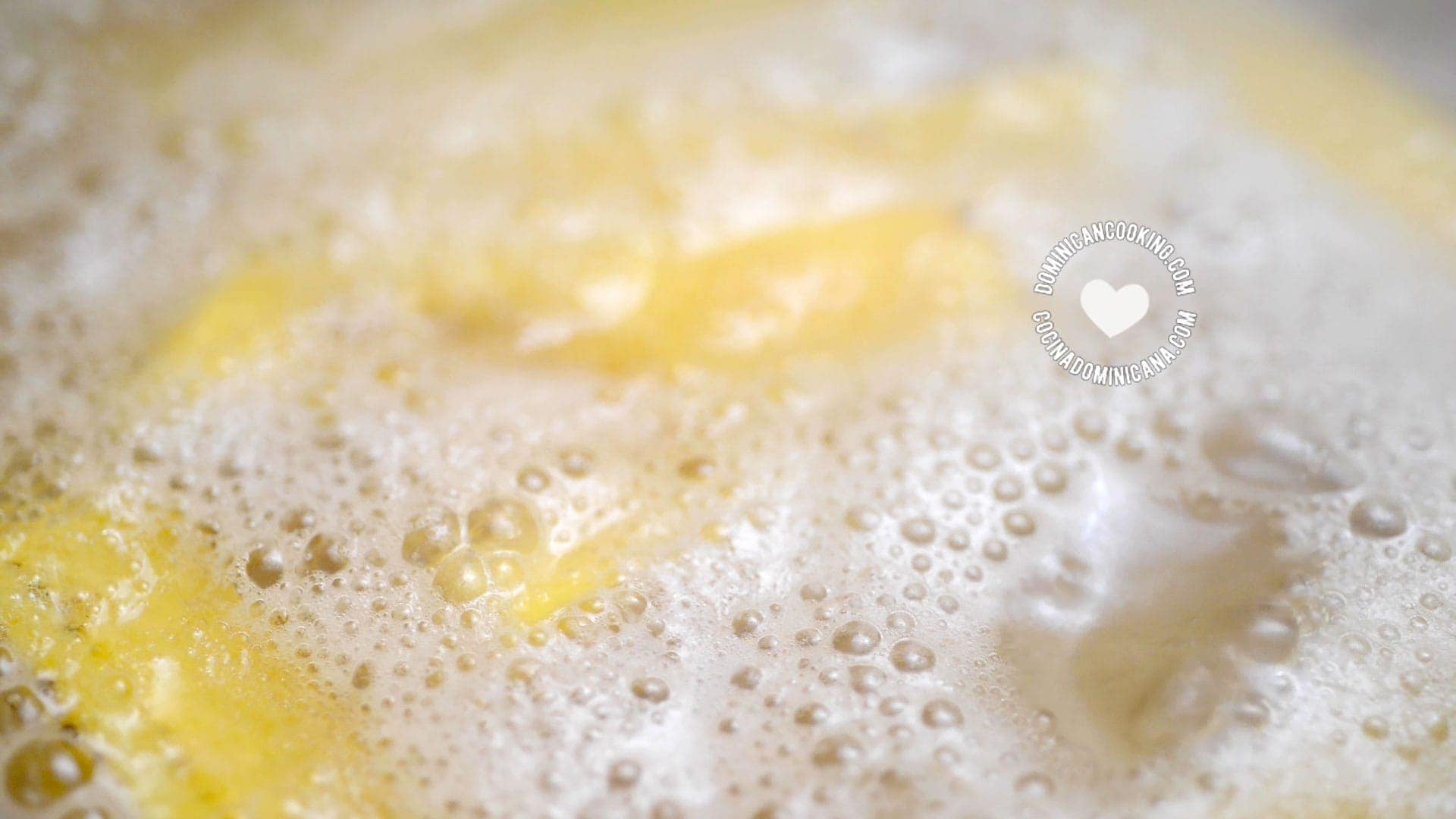 Boil the plantains in enough water to cover them plus an inch until they are very tender, having added the salt to the water before the water breaks the boil.
Boil the plantains in enough water to cover them plus an inch until they are very tender, having added the salt to the water before the water breaks the boil.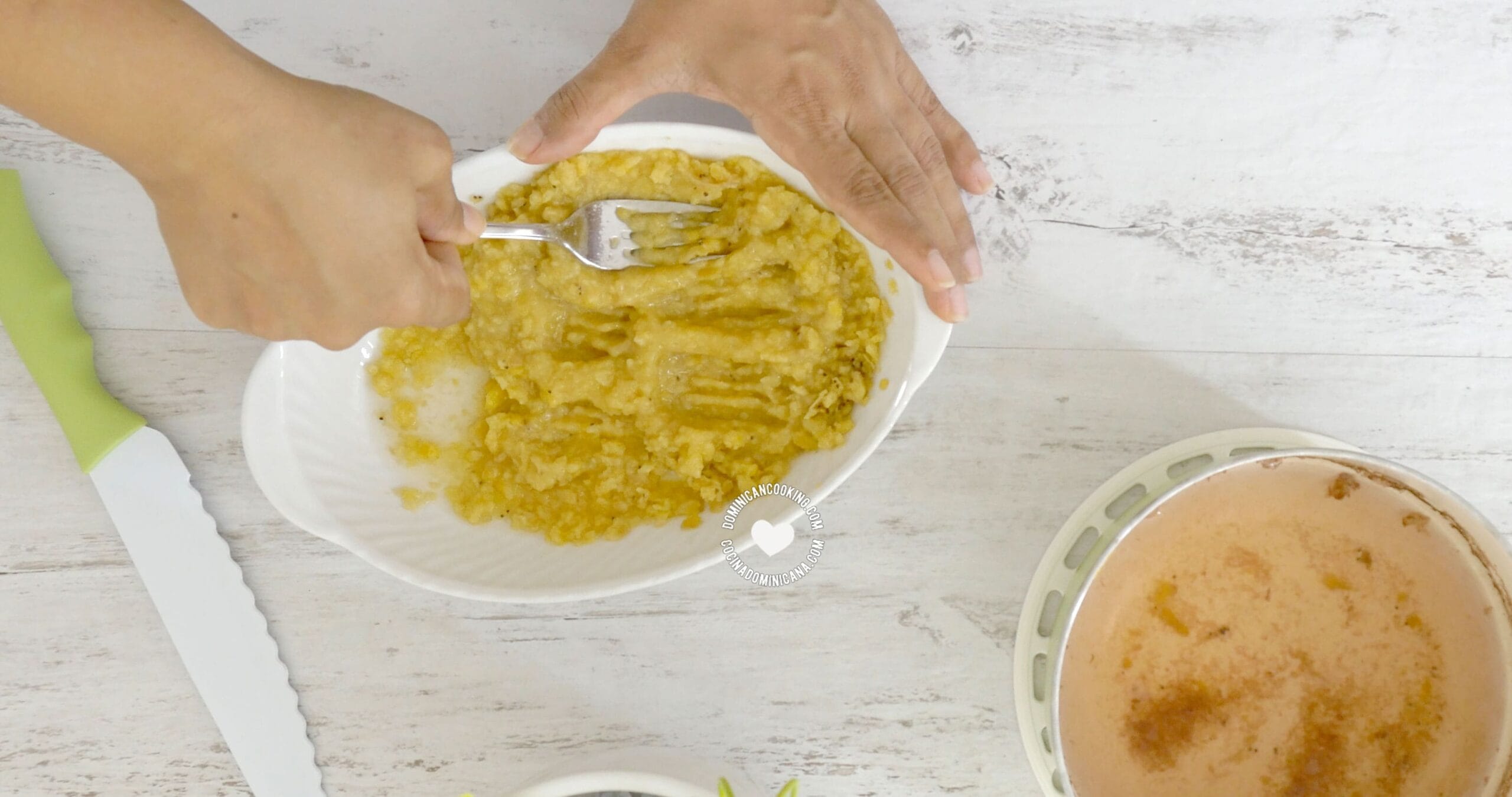 Remove the plantains from the water and mash them right away with a fork until they are very smooth and there are few to no lumps (be careful not to burn yourself). Mix in butter, and progressively add a cup of water at room temperature and keep mashing and mixing until it turns into a very smooth puree (see tips below).
Remove the plantains from the water and mash them right away with a fork until they are very smooth and there are few to no lumps (be careful not to burn yourself). Mix in butter, and progressively add a cup of water at room temperature and keep mashing and mixing until it turns into a very smooth puree (see tips below).
Onions
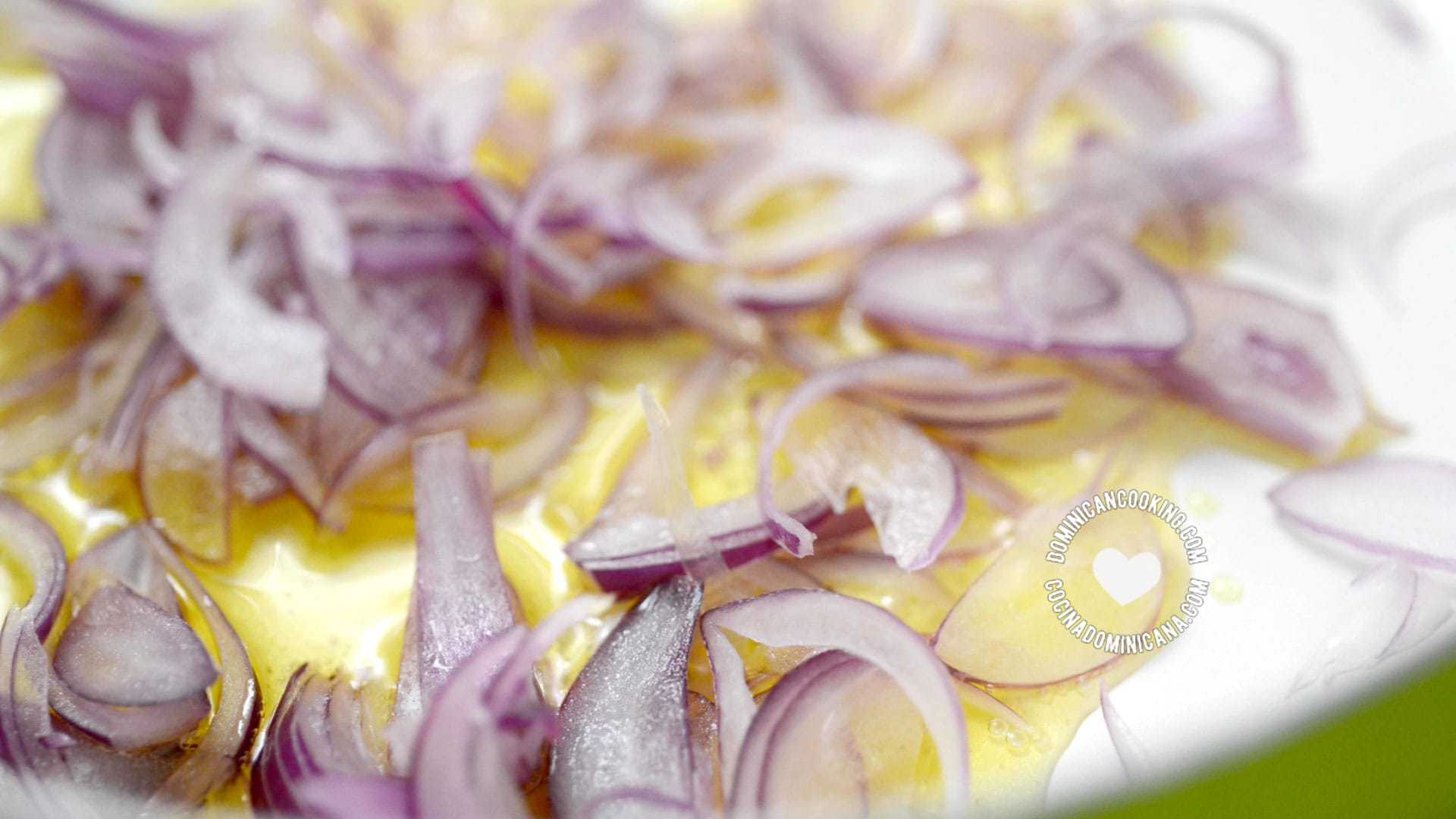 Heat a tablespoon of olive oil in a skillet over low heat. Add onions and cook and stir until they become translucent. Pour in vinegar and season with salt to taste.
Heat a tablespoon of olive oil in a skillet over low heat. Add onions and cook and stir until they become translucent. Pour in vinegar and season with salt to taste.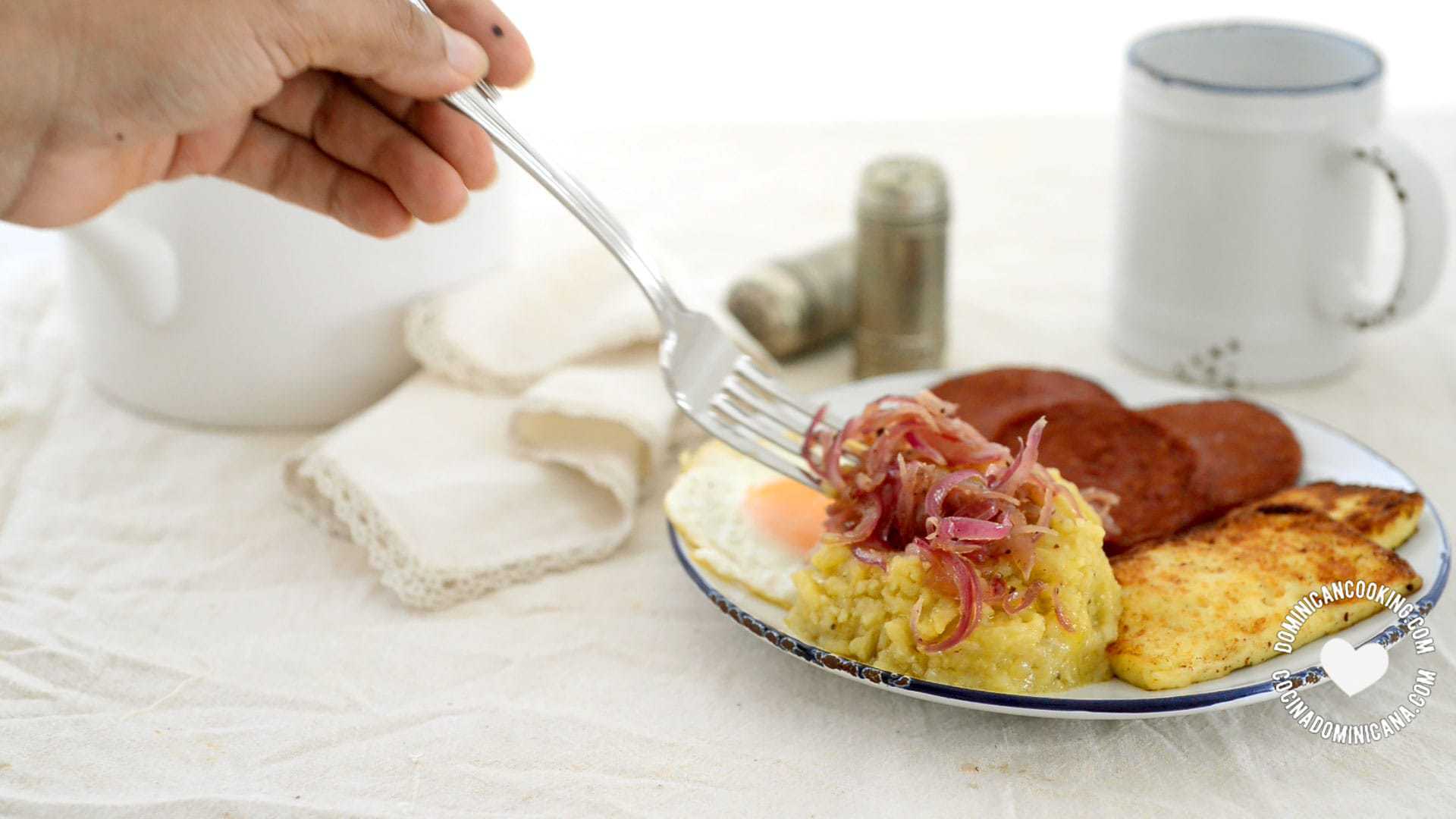 Garnish mangu with the onions and serve per suggestions above.
Garnish mangu with the onions and serve per suggestions above.
Video
Tips and Notes
Nutrition
Nutritional information is calculated automatically based on ingredients listed. Please consult your doctor if you need precise nutritional information.
FAQs
My trick for very smooth mangú is to add a bit more water than it seems necessary at first. As it cools down, mangú will inevitably get harder, so start with a mushy mangú, and by the time it gets to the table it will be soft and creamy. Also, you'll need to mash very well, there's nothing worse than a lumpy mangú.
Yes, you can reheat mangú! Microwave or reheat in a pan, just remember to add a bit more water because it will otherwise be too dry.
Culture
This part was written in collaboration with Aunt Ilana
This is one of the best-known and most representative recipes of Dominican cuisine. It could probably be called Dominicans' official breakfast dish. A must-try for those sampling our cuisine. And yet we sometimes hear that "el plátano embrutece". It means that eating plantains is associated with intellectual inferiority.
Mangú with all the typical sides is a little heavy on the system, perhaps, but nutritious enough. It also depends on how monotonous your diet is. If you eat little else but plantains it is not as beneficial as a varied diet that includes plantains.
In reality, we've yet still to meet any Dominican who looks down on mangú. That is one of the things I love about this country: despite sayings like ‘el platano embrutece’ which are said more in jest than anything, Dominicans are still fiercely proud and appreciative of their traditional cuisine. It is less and less frequent to hear this saying.
History
Plantains arrived in Santo Domingo from the Canary Islands in the early 1500s (2), about a decade after the first enslaved Africans. Plantain was by then an already established crop in West Africa.
Various mashed plantain dishes are part of the traditional West African cuisine (like Matoke, and Fufu, the last one still surviving in Cuba).
Why it's called mangú
There's a cute apocryphal story going around that explains that mangú got its name from the expression "man, good!" (which makes no grammatical sense, anyway) supposedly uttered by American soldiers during the American occupation of the Dominican Republic when they tried mangú. This is almost certainly not the origin of the name.
Conveniently, the story doesn't even mention which American occupation. By the second American occupation in 1965, mangú had already appeared in various Dominican books dating decades prior (1), and a mere couple of decades from the first occupation. None mention anything about this purported origin of the word.
The word "mogo" for the Cuban fufú --the closest dish to mangú we've found-- was already in use over two centuries ago in Cuba and attributed to "la nigricia", referring to people of African descent (3). It's certainly possible that these names are related, but we have found no definitive evidence of it.
It is still more than likely that the word and dish mangú are of African origin, as are many of our dishes, but it's difficult to draw a line that we are comfortable calling definitive for lack of documentation.
Curiously, mangú is also the name for a type of religious practice of the Azande people in Congo (where most of our African ancestors came from). Mangú is the magical substance that inhabits the stomach of witches.
References
(1) Amanda Ornes de Perelló, Manual de Economía Doméstica. Sto. Dgo: Imp. La Información, 1938.
(1) Manuel A. Patin M. Dominicanismos. Sto. Dgo: Ed. Montalvo, 1940
(2) A. de Humboldt. Examen Político Sobre la Isla de Cuba. Gerona: Imp. de A. Oliva, 1836
(3) Esteban Pichardo. Diccionario Provincial Casi Razonado de Vozes y Frases Cubanas. Habana: Imp. El Trabajo, 1875
"[...]plátano salcochado y majado con manteca [...] En Bayamo se denomina Mogo, que tal vez será síncopa de Mofongo, palabra de Nigricia, usada en algunas de las Antillas."
Published August 26, 2001, and last revised


